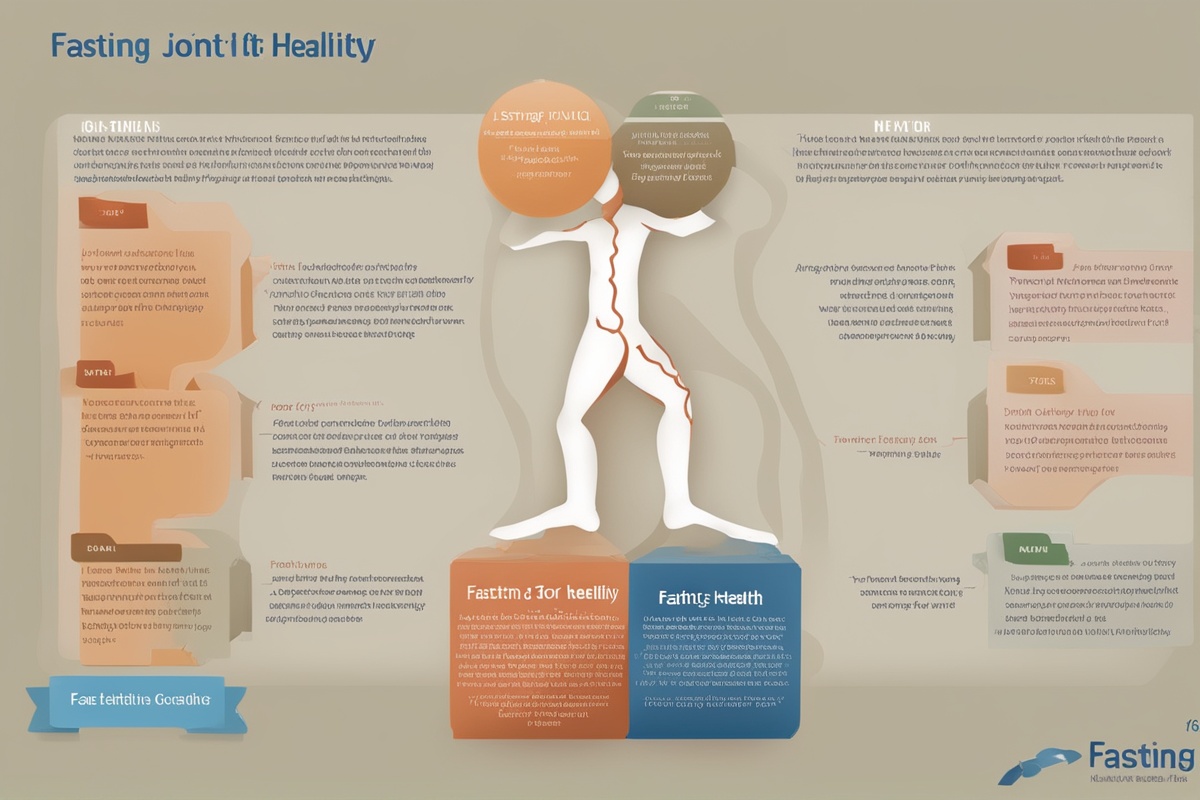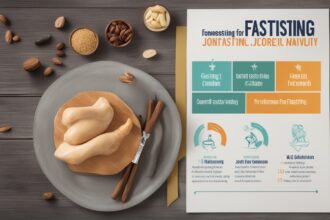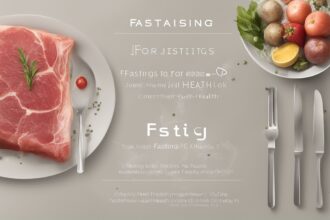Hey there, health enthusiasts! If you’re exploring ways to improve your joint health naturally, you might be surprised to learn that fasting—yes, intentionally skipping meals for a set period—could be a game-changer. Fasting has been practiced for centuries, often for spiritual or cultural reasons, but modern science is now uncovering its incredible potential for physical wellness. Among the many fasting benefits, its impact on joint health stands out, especially for those battling chronic pain, stiffness, or conditions like arthritis. In this deep dive, we’ll explore how fasting can support your joints, reduce inflammation, and boost mobility. I’ll share the latest research, practical tips to get started, and ways to make fasting a sustainable part of your lifestyle. Let’s unpack how this ancient practice could be your modern solution for happier, healthier joints!
What Is Fasting, and How Does It Work?
Fasting is the voluntary abstention from food and, sometimes, drink for a specific period. It comes in various forms, such as intermittent fasting (alternating eating and fasting windows, like the 16:8 method), prolonged fasting (lasting 24–72 hours or more), or time-restricted eating. While weight loss is often the first thing people associate with fasting, the fasting benefits extend far beyond shedding pounds. When you fast, your body shifts into a state of metabolic flexibility, relying on stored energy (like fat) instead of constant food intake. This process triggers a cascade of cellular and hormonal changes that can positively affect inflammation, tissue repair, and overall health—key factors for joint wellness (Mattson et al., 2017).
During fasting, your body also enters a state called autophagy, where it cleans out damaged cells and regenerates healthier ones. This “cellular housekeeping” is particularly relevant for joints, as it may help reduce the wear and tear that leads to pain and degeneration. So, whether you’re curious about fasting for joint pain relief or simply want to optimize your body’s natural repair systems, understanding how fasting works is the first step to reaping its rewards.
The Science Behind Fasting Benefits for Joint Health
Let’s get into the nitty-gritty: how exactly does fasting help your joints? The answer lies in its ability to combat inflammation, a major culprit behind joint pain and conditions like osteoarthritis and rheumatoid arthritis. Chronic inflammation in the body can damage cartilage and synovial tissue, leading to stiffness and discomfort. Research shows that fasting can lower levels of pro-inflammatory markers, such as C-reactive protein (CRP) and interleukin-6 (IL-6), which are often elevated in people with joint issues (Longo & Mattson, 2014). By dialing down this inflammatory response, fasting creates a more joint-friendly environment in your body.
Beyond inflammation, fasting also promotes weight loss, which directly benefits joint health. Excess body weight puts added stress on weight-bearing joints like the knees and hips. Studies suggest that losing even a small percentage of body weight through fasting can significantly reduce joint strain and pain (Messier et al., 2005). Additionally, fasting enhances insulin sensitivity and reduces oxidative stress—two factors linked to better joint tissue health (Johnson et al., 2007). While more human trials are needed to fully understand the long-term effects, the early evidence for fasting benefits in managing joint conditions is promising and worth exploring.
Fasting and Arthritis: Can It Ease the Pain?
If you or a loved one struggles with arthritis, you know how debilitating joint pain and swelling can be. Whether it’s osteoarthritis (caused by cartilage breakdown) or rheumatoid arthritis (an autoimmune condition), managing symptoms often involves medication, physical therapy, or lifestyle changes. But could fasting for joint pain relief be an additional tool in your arsenal? Some studies suggest yes. For instance, periodic fasting has been shown to reduce disease activity in rheumatoid arthritis patients by modulating immune responses and decreasing inflammation (Müller et al., 2001).
While fasting isn’t a cure for arthritis, it may complement other treatments by supporting your body’s natural anti-inflammatory mechanisms. Imagine giving your joints a break—not just from physical stress but from the internal “noise” of chronic inflammation. That said, fasting isn’t a one-size-fits-all solution, and anyone with a chronic condition should consult a healthcare provider before starting. Still, the potential of fasting benefits for arthritis management is an exciting area of research that could offer hope to millions.
Practical Tips for Fasting to Support Joint Health
Ready to give fasting a try for your joints? I’m thrilled to share some actionable steps to help you start safely and effectively. Fasting doesn’t have to be intimidating, and you don’t need to jump into a week-long fast right away. The key is to ease into it, listen to your body, and prioritize nutrition during eating windows. Here are some beginner-friendly tips to maximize the fasting benefits for joint health:
- Start with intermittent fasting: Try the 16:8 method, where you fast for 16 hours and eat during an 8-hour window. It’s manageable for most people and still offers anti-inflammatory benefits.
- Stay hydrated: Drink plenty of water during fasting periods to support joint lubrication and overall health. Dehydration can worsen stiffness, so keep a water bottle handy.
- Focus on anti-inflammatory foods: When you break your fast, prioritize foods like fatty fish, nuts, berries, and leafy greens to enhance joint support.
- Avoid overdoing it: If you’re new to fasting, don’t push for extended fasts right away. Build up gradually to avoid stress on your body.
Remember, consistency is more important than intensity. Even a few days of fasting per week can yield noticeable improvements in how your joints feel over time.
Potential Risks and How to Avoid Them
While the fasting benefits for joint health are compelling, it’s not without potential downsides if done improperly. Fasting isn’t suitable for everyone, and certain groups—like pregnant women, individuals with eating disorders, or those with specific medical conditions—should avoid it unless under medical supervision. Even for healthy individuals, fasting can sometimes lead to fatigue, irritability, or nutrient deficiencies if not planned well (Johnstone, 2015). So, how can you fast safely while targeting joint wellness?
- Consult a professional: Speak with a doctor or dietitian, especially if you have arthritis or other joint conditions, to ensure fasting won’t interfere with medications or treatments.
- Don’t skip nutrients: Make sure your meals during eating windows are balanced with protein, healthy fats, and vitamins to support joint tissue repair.
- Listen to your body: If you feel dizzy, weak, or unusually achy, break your fast and reassess your approach. Joint health shouldn’t come at the cost of overall well-being.
- Pair with gentle movement: Incorporate low-impact exercises like yoga or walking during fasting to maintain joint mobility without over-stressing them.
By taking these precautions, you can minimize risks and focus on the positive impact fasting can have on your joints. It’s all about finding a balance that works for you.
Combining Fasting with Other Joint-Friendly Habits
Fasting is powerful, but it’s not a standalone fix for joint health. To truly optimize the fasting benefits, consider pairing it with other lifestyle habits that support your joints. Think of fasting as one piece of the puzzle—when combined with complementary practices, it can amplify your results. For example, maintaining a healthy weight through fasting and mindful eating reduces mechanical stress on joints, while regular movement keeps them flexible and strong. Research also highlights the role of sleep and stress management in controlling inflammation, which ties directly into joint comfort (Irwin et al., 2016).
So, alongside fasting for joint pain relief, prioritize getting 7–9 hours of quality sleep, practice stress-relief techniques like meditation, and stay active with joint-friendly exercises. These habits work synergistically with fasting to create a holistic approach to joint care. Plus, they’re easy to integrate into your routine, making the journey to better joint health feel less like a chore and more like a lifestyle upgrade.
As we’ve explored, the fasting benefits for joint health are rooted in science and real-world potential. From reducing inflammation and easing arthritis symptoms to supporting weight loss and cellular repair, fasting offers a natural way to care for your joints. It’s not a magic bullet, but when done thoughtfully, it can be a powerful tool in your wellness toolkit. Whether you’re dealing with chronic joint pain or simply want to stay mobile as you age, fasting could be worth a try. Start small, stay consistent, and always prioritize safety by consulting with a healthcare provider if you’re unsure. I hope this guide has inspired you to explore how fasting for joint pain relief can fit into your life. Here’s to moving better, feeling stronger, and embracing the incredible ways our bodies can heal!
References
- Irwin, M. R., Olmstead, R., & Carroll, J. E. (2016). Sleep disturbance, sleep duration, and inflammation: A systematic review and meta-analysis of cohort studies and experimental sleep deprivation. Biological Psychiatry, 80(1), 40–52.
- Johnson, J. B., Summer, W., Cutler, R. G., Martin, B., Hyun, D. H., Dixit, V. D., … & Mattson, M. P. (2007). Alternate day calorie restriction improves clinical findings and reduces markers of oxidative stress and inflammation in overweight adults with moderate asthma. Free Radical Biology and Medicine, 42(5), 665–674.
- Johnstone, A. (2015). Fasting for weight loss: An effective strategy or latest dieting trend? International Journal of Obesity, 39(5), 727–733.
- Longo, V. D., & Mattson, M. P. (2014). Fasting: Molecular mechanisms and clinical applications. Cell Metabolism, 19(2), 181–192.
- Mattson, M. P., Longo, V. D., & Harvie, M. (2017). Impact of intermittent fasting on health and disease processes. Ageing Research Reviews, 39, 46–58.
- Messier, S. P., Loeser, R. F., Mitchell, M. N., Valle, G., Morgan, T. P., Rejeski, W. J., & Ettinger, W. H. (2005). Exercise and weight loss in obese older adults with knee osteoarthritis: A preliminary study. Archives of Internal Medicine, 165(11), 1344–1349.
- Müller, H., de Toledo, F. W., & Resch, K. L. (2001). Fasting followed by vegetarian diet in patients with rheumatoid arthritis: A systematic review. Scandinavian Journal of Rheumatology, 30(1), 1–10.






